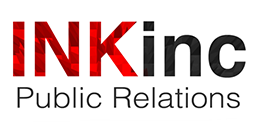Having a great pitch, a great product, or a great hook is the most important part of getting media coverage. But once you get a reporter interested, there are a few digital assets every business should have available to make the reporter’s job easy.
These things should all be either available for review and available to download on your website, or quickly shareable by your friendly public relations professional.
1. A one-page company or product fact sheet. That’s it. One page. It should have very short, very easy to read copy that outlines things such as:
Company Name
Locations
Number of employees
Primary services or industries
Key metrics of your product or service (ie if your technology helped process 500,000 transactions a year, include that)
Names of large or notable customers
Revenue figures (if you’re sharing them publicly)
The one-page fact sheet has information that your public relations person has probably already shared with the media multiple times. But having all that information in one easy to access place makes it easier for the reporter to put their story together.
2. High-resolution photos of your logo, your product, and your key executives.
It’s so much easier to have these on hand than it is to chase them down once a reporter has asked. Don’t be the client that has to resort to sending a Facebook profile picture to be displayed next to an op-ed piece we have worked to place for you. The product shots and logos are important, too. Most sites require at least 300 dpi resolution.
3. Bios of your key executives.
Again, this is information that your PR person has probably already shared. But it’s incredibly helpful to have that information at a reporter’s fingertips rather than them having to search through old emails.
4. Video.
This could be a video of your product being used, footage of your company headquarters, or even just an interview with your executives. Anything you can provide that helps to tell your story better is a good thing. Those video assets can even be used by media (broadcast and online) in the stories they put together.
To sum it up, reporters are busy, reporters are on deadline, and reporters are now responsible for generating much more content with fewer internal resources than they have in the past. Once your public relations partner has gotten the reporter interested in doing a story, anything you can do to make their job easier increases the chances that the story will be done quickly and done well. For a look at how we’ve worked to get great media coverage for our clients, head over to our case study page.
